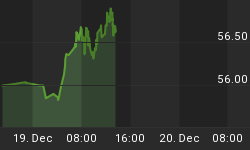In a recent post, I suggested that long term treasury yields had the technical characteristics of an asset class where a long term secular trend change could be at hand. See figure 1, a monthly chart of the 10 year Treasury yield. The chart goes back to 1965 and includes a bear and a bull market for bonds. The indicator in the lower panel is our "next big thing" indicator that seeks to identify those times when a secular trend change is highly likely. (Of note, this indicator works across multiple markets.)
Figure 1. 10 Year Treasury Yield/ monthly
The "next big thing" indicator is in the zone where we would expect a secular change in the trend, but so far, price confirmation (i.e., yields greater than the 10 month moving average) has not happened. Yields on the 10 year Treasury are at all time lows and are less than 3%!
Various explanations have been offered for such an anomaly and include a flight to safety and liquidity and the government's plan to back mortgage securities. Regardless of the cause, in the end, such one sidedness is unlikely to be rewarded. The question in my mind is this: are Treasury bonds the next bubble to burst?
While confirmation for higher yields (and secular trend change) seems to be off in the future for now, it would not surprise me to see higher yields in the near term. Figure 2 is a weekly chart of the 10 year Treasury yield, and last week's down draft in yields is now at the lower end of a down sloping trend channel. Typically, one would expect a bounce at this juncture.
Figure 2. 10 year Treasury yields/ weekly
Lastly, one caveat: higher yields will likely be associated with higer stock prices as money comes out of bonds and flows into stocks. I don't expect a trend change anytime soon (in yields), and I am not expecting higher stock prices to lead to a new bull market.















